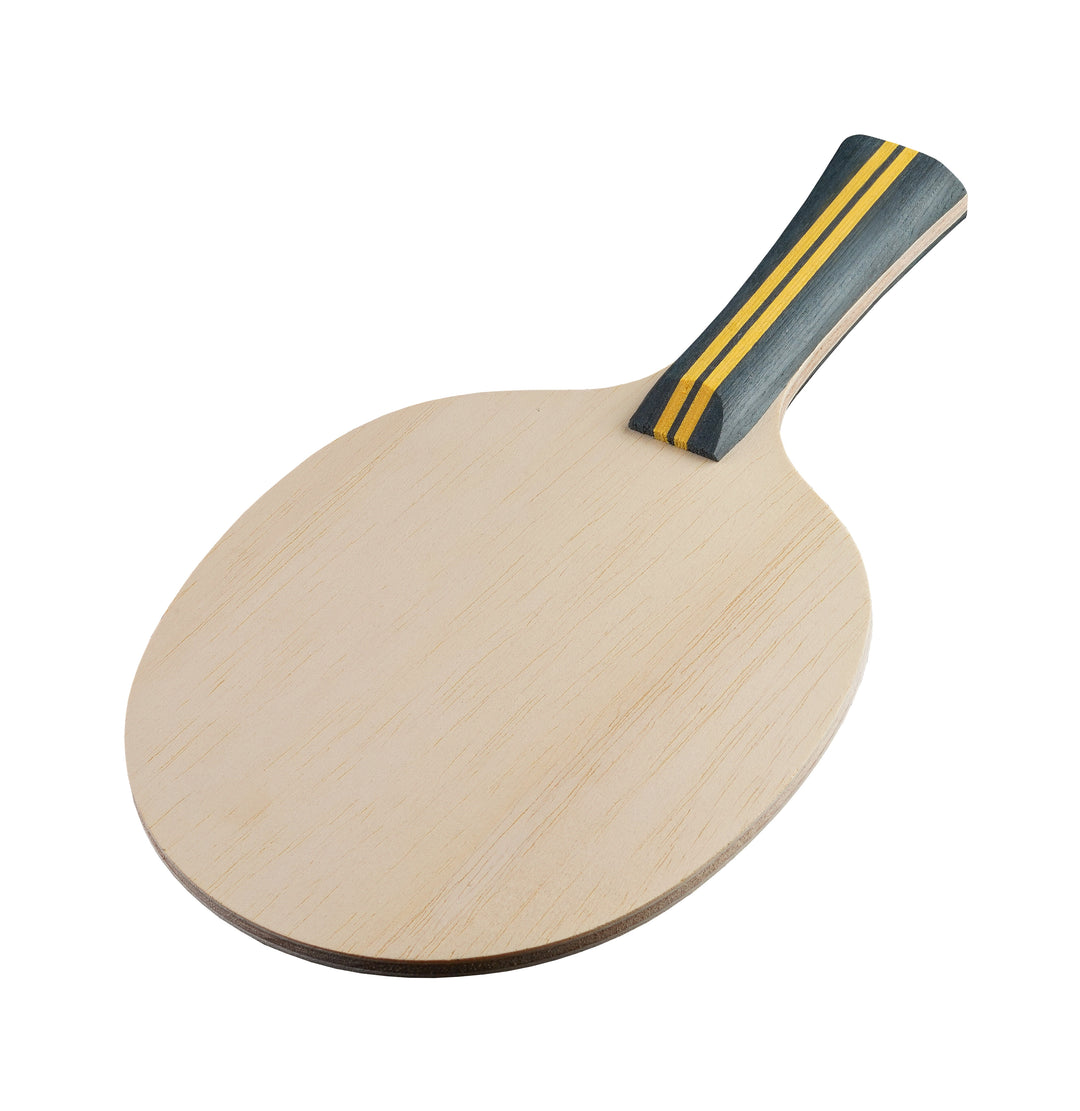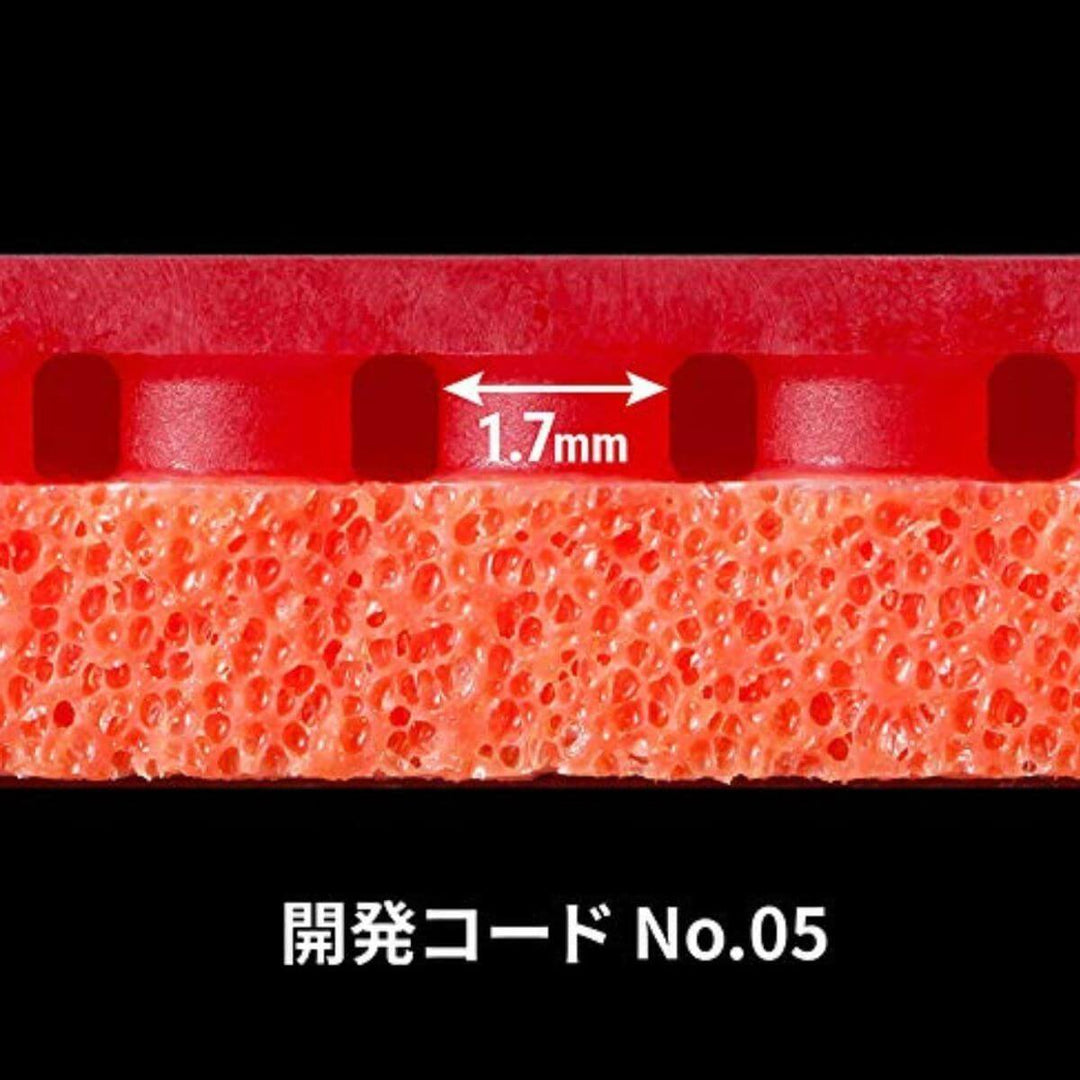Demystifying Table Tennis Rubber Hardness: A Comprehensive Guide

Understanding Rubber Composition
To comprehend the significance of rubber hardness, it's crucial to grasp the anatomy of a table tennis rubber sheet. These rubbers comprise two primary components: a topsheet and a sponge layer. The hardness we refer to pertains specifically to the sponge, which serves as the power reserve, influencing the rubber's speed, spin generation, and overall performance characteristics.
Sponge Hardness Spectrum
Table tennis rubbers span a wide spectrum of sponge hardness, ranging from remarkably soft to exceptionally firm varieties. This hardness factor is typically measured on specific scales, Butterfly, or DHS (Double Happiness) scales. It's essential to note that these scales are not directly comparable, as a rubber rated as, say, 40° would be considered soft, while a 40° rating on the DHS scale would indicate an extremely hard rubber.
Soft Rubbers: Forgiving and Spin-Friendly
Soft rubbers, typically rated between 37° and 41° , are renowned for their forgiving nature and exceptional spin generation capabilities. These rubbers excel in scenarios where moderate acceleration is applied, as the sponge compresses effortlessly, enabling the ball to penetrate deeply and imparting substantial spin. However, soft rubbers are prone to "bottoming out," a phenomenon where the sponge reaches its maximum compression limit, thereby limiting the potential for further speed and spin enhancement.
Medium Rubbers: Balanced Performance
Occupying the middle ground are medium rubbers, with hardness ratings ranging from 42° to 46°. These rubbers strike an equilibrium between spin, speed, and control, making them a popular choice among players seeking a well-rounded performance. While not as forgiving as their softer counterparts, medium rubbers offer a stable platform for developing consistent strokes and technique.
Hard Rubbers: Power and Precision
At the higher end of the hardness spectrum lie hard rubbers, typically rated between 47° and 55°. These rubbers are favored by advanced and professional players due to their ability to generate immense speed and spin when struck with significant force. Hard rubbers are less susceptible to bottoming out, enabling players to unleash their full power potential without sacrificing control or stability, even at high speeds.
Hardness and Playing Style
The choice of rubber hardness is inextricably linked to a player's skill level, playing style, and personal preferences. Beginners and defensive players often gravitate towards softer rubbers, as they prioritize control and forgiveness over raw power. Conversely, offensive-minded and advanced players tend to favor harder rubbers, which allow them to capitalize on their technical prowess and generate explosive shots with precision and consistency.
Gearing Up: Rubber Hardness and Power Delivery
One of the key concepts in understanding rubber hardness is the notion of "gears." Softer rubbers, while providing ample spin and speed at moderate acceleration, tend to lack the lower and higher gears, limiting their performance at both extremes. In contrast, harder rubbers boast a wider range of gears, enabling players to precisely modulate the power delivery and achieve greater speed and spin variations.
Balancing Hardness and Control
A common misconception is that softer rubbers inherently offer superior control. While this may hold true to some extent, it's essential to consider the interplay between hardness and control at different levels of play. For beginners and intermediate players, softer rubbers can indeed provide a more forgiving and controllable experience. However, at advanced levels, where precise technique and power generation are paramount, harder rubbers often offer superior control and stability, particularly during high-impact shots and spin-laden rallies.
Customizing for Forehand and Backhand
Most players opt for a combination of rubber hardnesses on their forehand and backhand sides, tailored to their individual strengths and weaknesses. The forehand stroke, being more powerful due to anatomical factors, often calls for a harder rubber to harness that power effectively. Conversely, the backhand side may benefit from a softer rubber, enabling greater control and spin generation during defensive or counter-attacking situations.
Blade Compatibility and Synergy
While rubber hardness plays a pivotal role in performance, it's crucial to consider the synergy between the rubber and the blade. Softer rubbers tend to pair well with stiffer blades, as the blade's rigidity compensates for the rubber's inherent softness, providing a balanced blend of speed, spin, and control. Conversely, harder rubbers often complement flexible blades, allowing players to leverage the rubber's power potential while maintaining a degree of touch and feel.
Durability and Longevity Considerations
Another factor to consider when selecting rubber hardness is durability and longevity. Generally, harder rubbers tend to exhibit greater longevity, as their dense sponge structure is less susceptible to wear and tear. Softer rubbers, on the other hand, may require more frequent replacements, particularly for players engaging in intensive training sessions or multi-ball drills. Reputable brands like Butterfly, Nittaku, and Victas are renowned for producing long-lasting rubbers across various hardness levels.
Evaluating Brand Reputation and Certifications
When investing in table tennis rubbers, it's essential to consider brand reputation and certifications. Trusted brands like Butterfly, DHS, Nittaku, Yasaka, XIOM, and Donic have established themselves as industry leaders, offering a wide range of rubbers catering to diverse playing styles and skill levels. Additionally, ensuring that the rubber is ITTF (International Table Tennis Federation) approved is crucial for competitive play, as non-approved rubbers may violate regulations and potentially lead to disqualification.
Maintenance and Care
Proper maintenance and care are crucial for prolonging the lifespan and preserving the performance of your table tennis rubbers, regardless of their hardness. Regular cleaning with a damp sponge and water, followed by air-drying and protective covering, can help prevent premature degradation. Avoid exposing your rubbers to extreme temperatures, humidity, or direct sunlight, as these conditions can adversely affect their structural integrity and performance characteristics.
Conclusion: Embracing Personal Preference
Ultimately, the choice of rubber hardness is a highly personal decision, influenced by factors such as playing style, skill level, and individual preferences. While general guidelines and recommendations exist, there is no one-size-fits-all solution. Experimenting with different hardness levels, seeking guidance from experienced coaches or players, and embracing a willingness to adapt and evolve are key to finding the perfect rubber hardness that complements your game and unlocks your full potential on the table tennis court.






